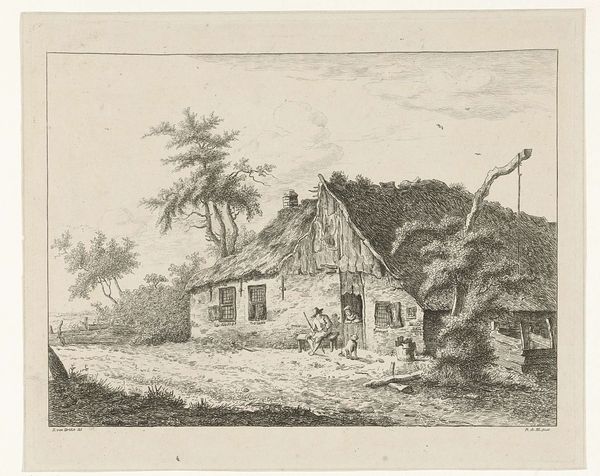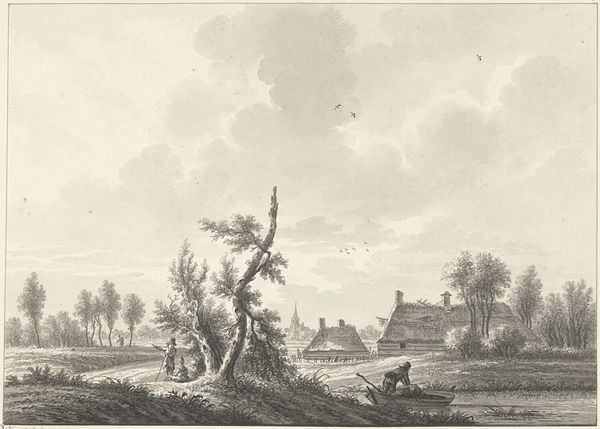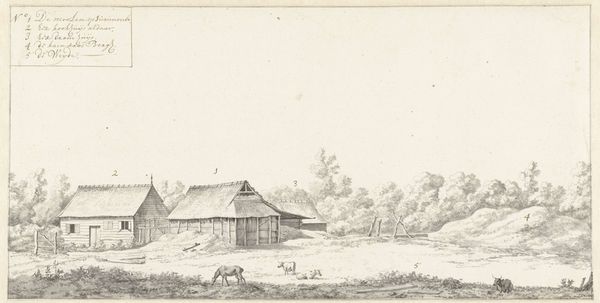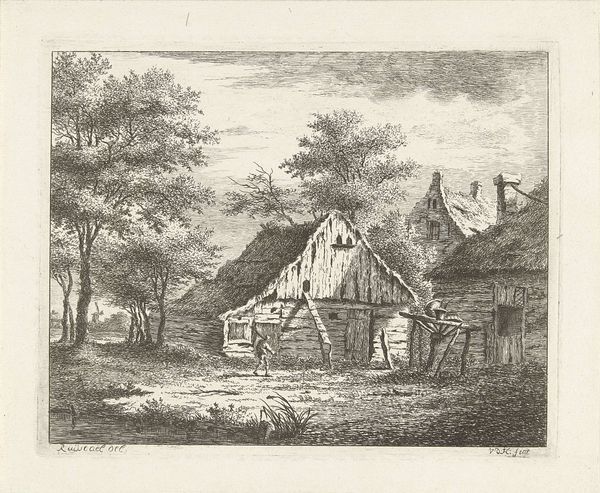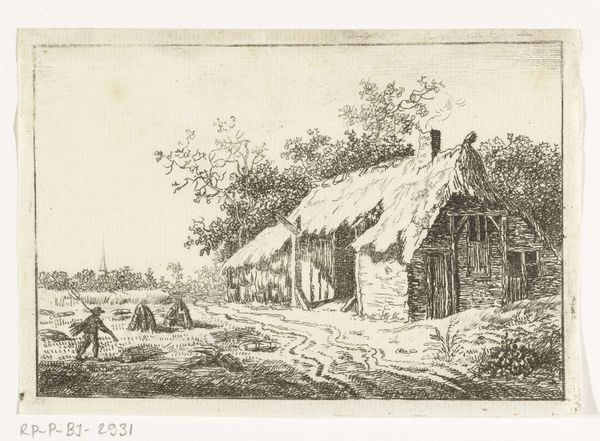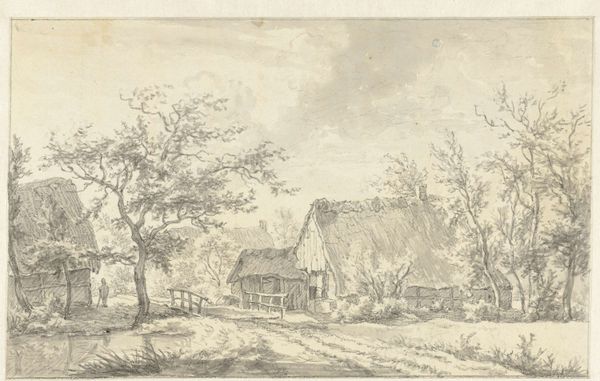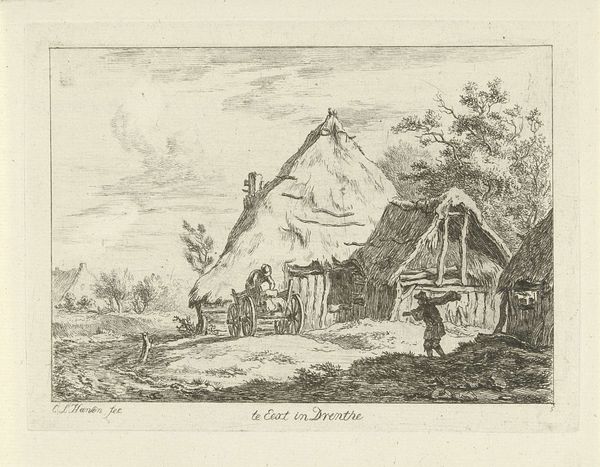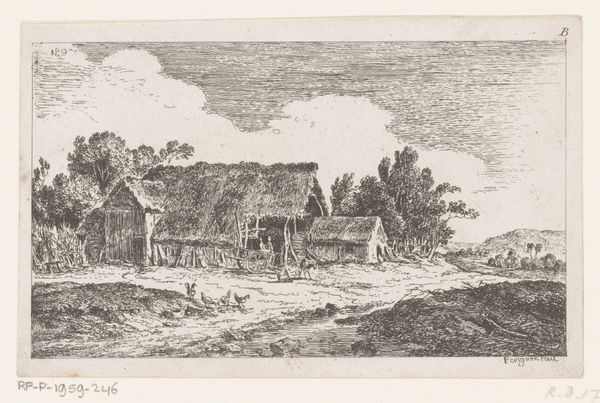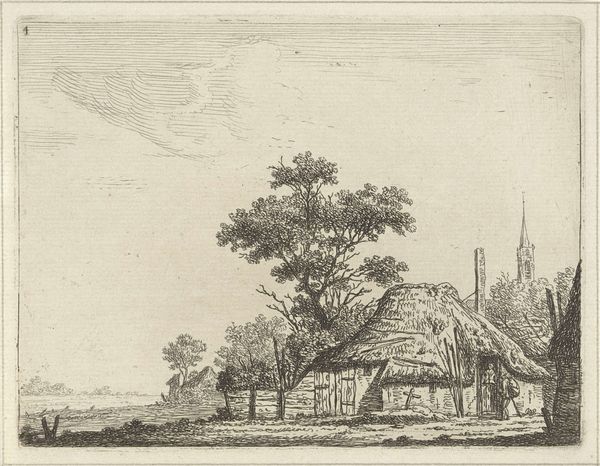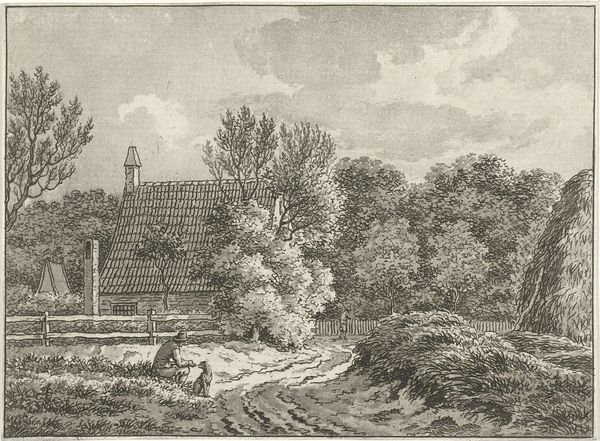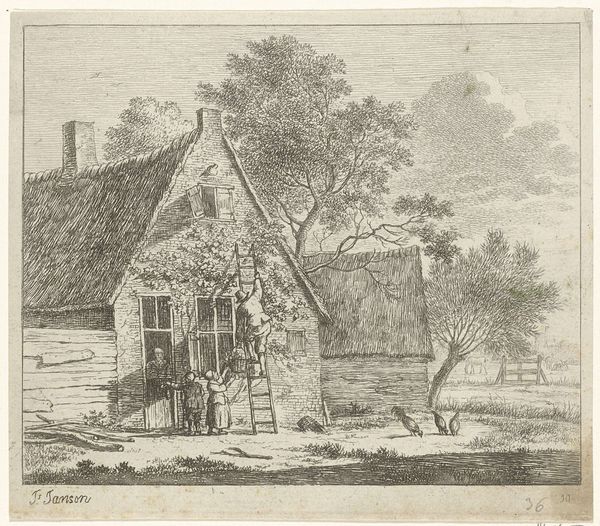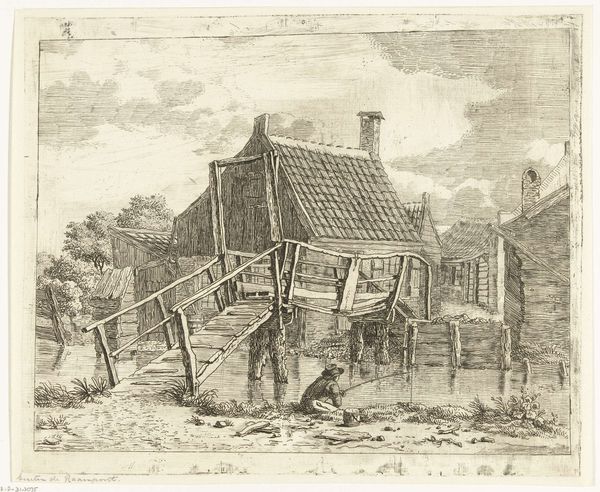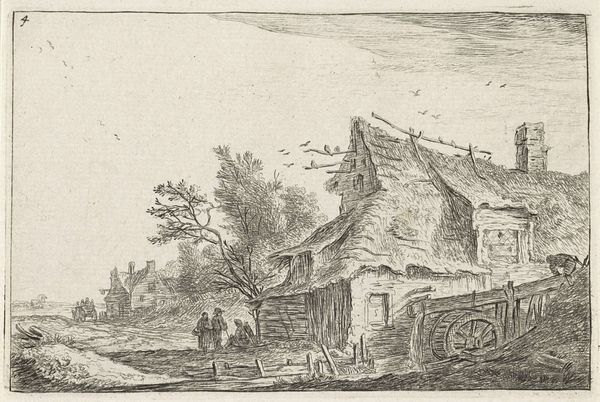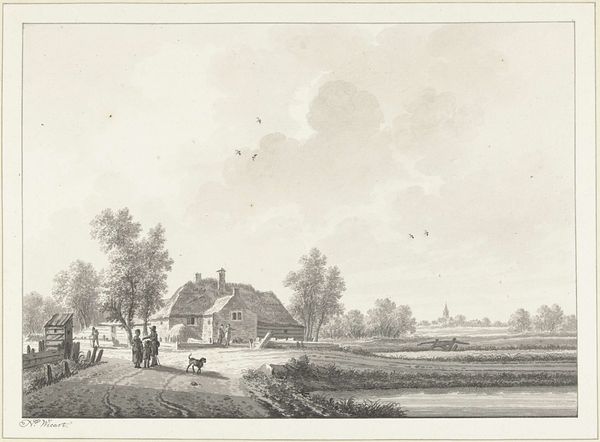
drawing, plein-air, ink, pen
#
drawing
#
dutch-golden-age
#
plein-air
#
landscape
#
ink
#
architectural drawing
#
pen
#
realism
Dimensions: height 286 mm, width 408 mm, height 243 mm, width 321 mm
Copyright: Rijks Museum: Open Domain
Curator: "Het dorp Drumpt in Gelderland," or "The Village of Drumpt in Gelderland," is a drawing made with pen and ink attributed to Nicolaas Wicart. Though its exact date isn't known, we believe it was created sometime between 1758 and 1815. What strikes you first about this Dutch Golden Age landscape? Editor: The overall impression is so… muted. Bleak almost. The grey-scale palette and slightly tilted composition convey a sense of precarity. I keep thinking about land ownership and the struggle for resources embedded in landscapes like these. Curator: It’s interesting that you describe it as bleak. For me, there is a harmony in its depiction of rural life. Wicart meticulously renders the details—the thatched roof of the farmhouse, the steeple in the distance, even the little figures gathered near the entrance. This precise observation speaks to a desire to preserve or even idealize a specific vision of the Dutch countryside. Editor: But idealizations are rarely innocent. Who gets to decide which vision is preserved, and at whose expense? This image presents a particular class perspective, I'd argue. The windmill in the background—a sign of industry, but also perhaps of the encroachment on nature, the displacement of rural communities. And look at the workers depicted here; their social status is defined by the fact they are grouped to work. Curator: Those elements contribute, I agree. Yet, within that reality is embedded an appreciation for a world connected by specific activities. The architecture itself bears symbols: notice how the strong horizontal lines of the main house offer stability and enclosure. The fence offers protection to private ownership and the workers’ clothes communicate cultural information in ways the current viewers perhaps can’t readily access. These weren't simply structures but statements, deeply embedded in their time. Editor: Exactly! So while on the surface, it’s a quaint scene of Dutch village life, there are implied layers of power dynamics and historical context that warrant a closer look. Who owns that land? What is being transported down that stream in that boat, for whom, and at what cost? Curator: A lot to unpack for a seemingly simple pen and ink drawing. Wicart’s "Het dorp Drumpt in Gelderland" becomes more than just a landscape. Editor: Absolutely. It offers a vital record for understanding the historical forces that shaped the rural environment, a record with enduring resonance for ongoing dialogues concerning landscape, labour, and resources.
Comments
No comments
Be the first to comment and join the conversation on the ultimate creative platform.
